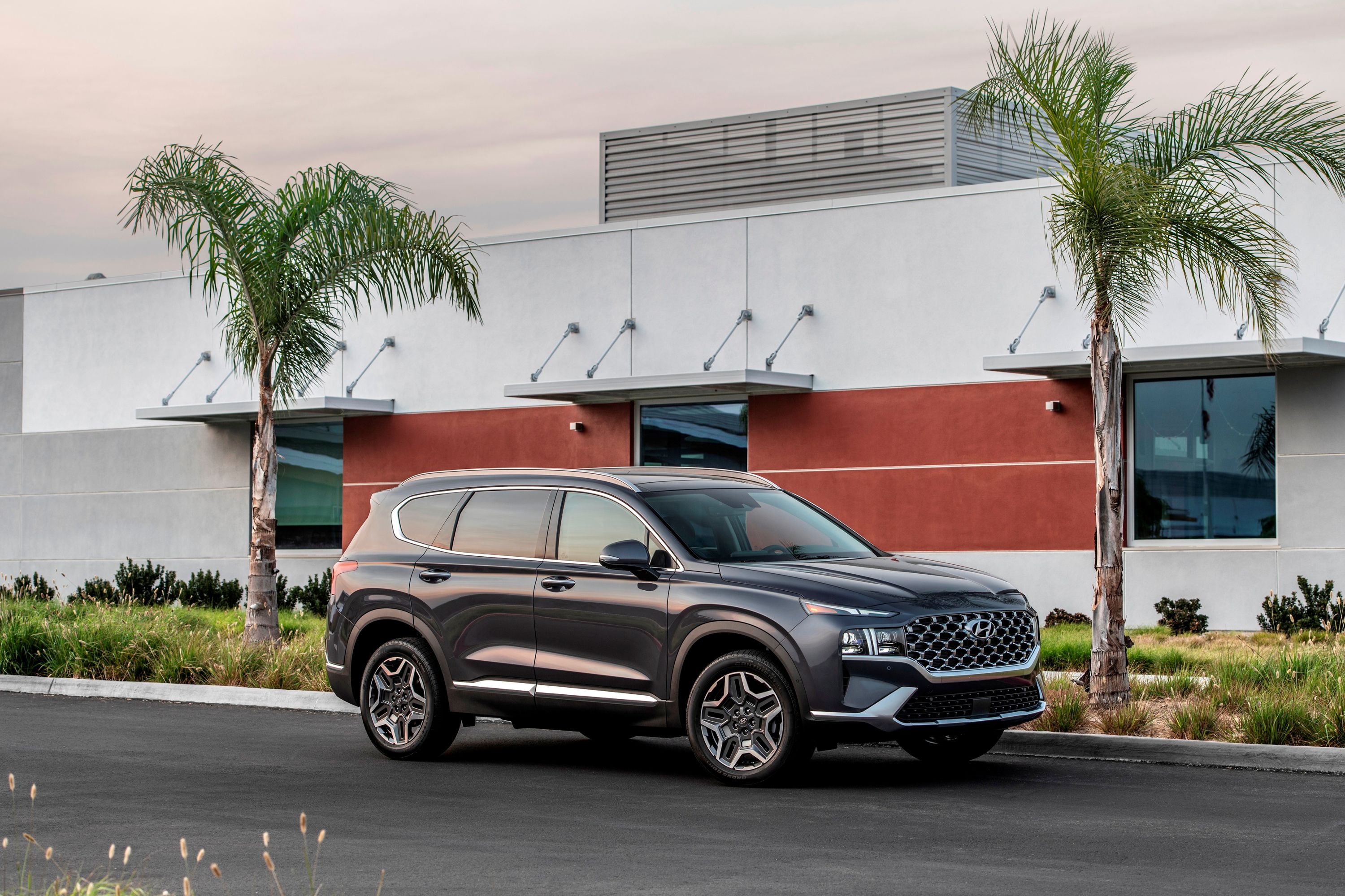
Last month, the 2021 Hyundai Santa Fe debuted with bolder exterior styling, a redesigned interior, and a new platform. The changes were more significant than you would expect for a mid-cycle facelift. However, there was one crucial detail Hyundai kept under wraps: the powertrain. Until now, that is.
At launch, the 2021 Hyundai Santa Fe will be available with a new hybrid setup combining a 1.6-liter T-GDi (turbocharged gasoline direct injection) 'Smartstream' engine, a 1.49 kWh lithium-ion polymer battery, and a 59-hp electric motor. Combined, this setup produces 226 horsepower and 258 lb-ft of torque, which can be sent to either the front or all four wheels. A plug-in hybrid will follow in early 2021 pairing the same 1.6-liter T-GDi 'Smartstream' engine with an 89-hp electric motor powered by a 13.8 kWh lithium-ion polymer battery. The total output is 261 hp and 258 lb-ft of torque.
Unlike the regular hybrid, the plug-in hybrid 2021 Santa Fe will only be available with four-wheel drive. Both drivetrains are available with a newly-developed six-speed automatic transmission that improves fuel efficiency.
While these engines have only been announced for Europe, there's a good chance they will carry over to the US version since the new 2021 Kia Sorento being sold in America is also available with the same hybrid and plug-in powertrains. A 2.2-liter Smartstream diesel powertrain will also be available in Europe, while the base model sold in the US is expected to once again use a 2.4-liter inline-four engine.
Thanks to its new platform, the 2021 Hyundai Santa Fe boasts improved performance, handling, fuel efficiency and safety. Aerodynamic force underneath the SUV has been significantly decreased, while stability is improved by the lowered position of heavy equipment within the platform, resulting in reduced weight and a lower center of gravity.
Fixed points for the steering arms are also now positioned closer to the middle of the front wheels for more agile handling, while improved engineering helps the SUV absorb impacts better during a collision, reducing deformation of the passenger space. Cabin space has also improved, as the 2021 Hyundai Santa Fe is 0.59 inches longer, 0.3 inches wider, and 0.19 inches higher than its predecessor. Second-row legroom has increased by 1.18 inches, while third-row legroom has increased by 1.57 inches.
With the rear seats up, the trunk capacity of the 5-seater version has improved by 0.31 cubic feet for a total capacity of 22.3 cubic feet. The capacity of the seven-seater version has been improved by 0.84 cubic feet for a total capacity of 20.1 cubic feet. With the second-row seats pushed forward and set to an upright position, capacity improves by 0.42 cubic feet for a total of 29.3 cubic feet for the 5-seater and by 1.13 cubic feet for a total of 27.6 cubic feet for the seven-seater version.
Sales for the 2021 Hyundai Santa Fe will be begin in September 2020 in Europe. The US version is expected to follow later this year.
